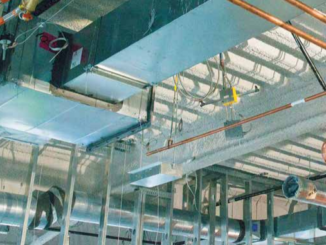As the first year of the new normal draws to a close, leaders can look back on the skills and strategies that defined success in 2022 and begin to think about what comes next.

Crisis. Upheaval. Uncertainty.
These words defined 2020 and 2021 in ways no one could have predicted. Just about every organization on earth felt the jolts of change as, day by day, the way people work, live, communicate, and think changed. When a severe storm hits and many hit the deck and wait for it to pass, leaders are tasked with staying steadfast at the helm, eye on the horizon for solutions. This is not easy work, but it is the work that defines us as leaders.
Pivot. Shift. Disruption. New Normal. The next round of words—action words—gave us direction into new territory. Rather than charge forth with guns blazing, we had to tread lightly, but confidently, and leap to new ground, taking the whole team with us. These assured us that the flexible and adept would survive and everyone else would go the way of the Blackberry. Some at first scoffed at words like “pivot” calling it the mumblings of Millennials, but that is exactly what the most effective and resilient organizations have done. Product redesigns, strategic redirection, and flexible retraining sent organizations into the unknown because it was better than staying stagnant—or worse—in the present. And for the brave, it worked out.
Diversity. Inclusion. Work-life balance. Wellness. The words defined by the new normal feel softer but it actually requires great strength to use them. If we are going to draw these concepts into the contemporary workplace and prop them up as pillars of the way forward—often under the watchful eye of a multi-generational workforce—success will require resolve and pateince.
Because 2022 demanded a more human approach—to everything. The upside of a global crisis is that it eases the effort required to understand another person’s perspective. Among outbursts and conspiracy theorists, there were a great many sentiments about how we need to be kind because you just never know what another person is feeling. Leaders unearthed compassion they didn’t know existed and started to make time and space for every person, often getting to know them on a brand new level. Eye level.
Most importantly, leaders who stayed optimistic, built strong and agile teams, delivered smart, efficient strategies, and prepared to switch gears as needed flourished.
In 2023, we are going to need these words, plus a few others. Here they are:
1. Self-reflection
Leaders who look honestly at their own skills and abilities and immerse themselves in unfamiliar territory to stretch the limits of their comfort zones will grow in important ways, and their teams will notice. Try new training, group activities, or personal reflection exercises to start discovering the power of vulnerability.
2. Emotional intelligence
Empathy leads to trust, and trust creates transparency. Together, these build integrity and the ability to inspire others. Leaders who make decisions while considering the impact on others will help develop a more productive and invested workforce. That doesn’t mean we ask for permission or wait for consensus. It means we make decisions we can stand behind because we’ve done the work to understand their true reach.
3. Feedback This is a more fluid, holistic type of communication than yearly reviews, micromanaging, or only communicating with the workforce for disciplinary reasons. Leadership objectives like enhancing behavior and shifting performance are far more accessible if feedback is balanced, frequent, and brief. Consider check-ins, text messages, or weekly acknowledgements to support others. When delivering corrective feedback, be curious (rather than angry), and engage the other person in the solution. Top-down is so three years ago.
4. Growth Mindset A fixed mindset says, “This is the way we’ve always done it,” “If it’s not broken, don’t fix it, “That person is smart, strong, good at his/her job.” A person with a growth mindset says, “Let’s try something different,” “How can we improve this,” “That person works hard/is creative/has so much potential.” Leaders with a growth mindset are more likely to lead teams to victory because the people in those teams are free to think, try new things, make mistakes, be accountable, and persevere. Not everything in a storm ends up broken. Some things bend, sway, and ultimately survive. Be one of them. ■



